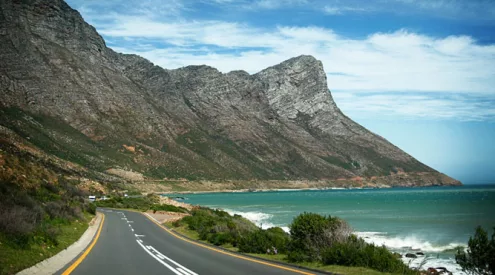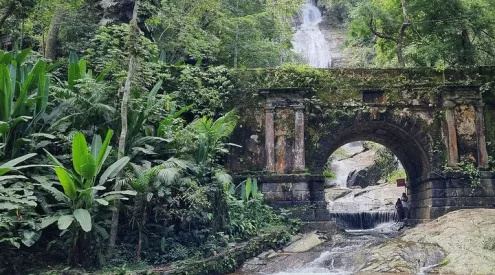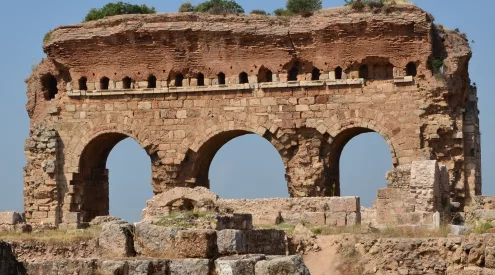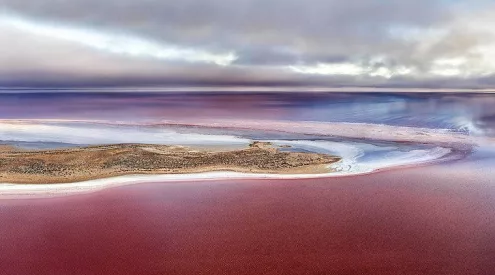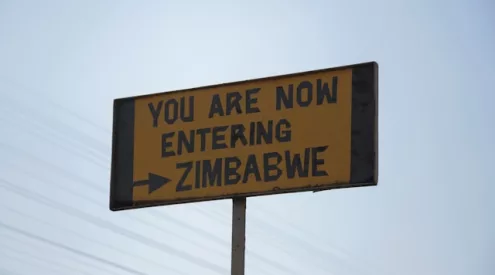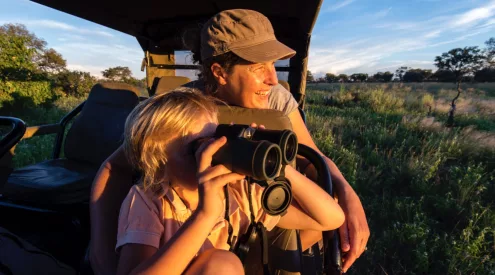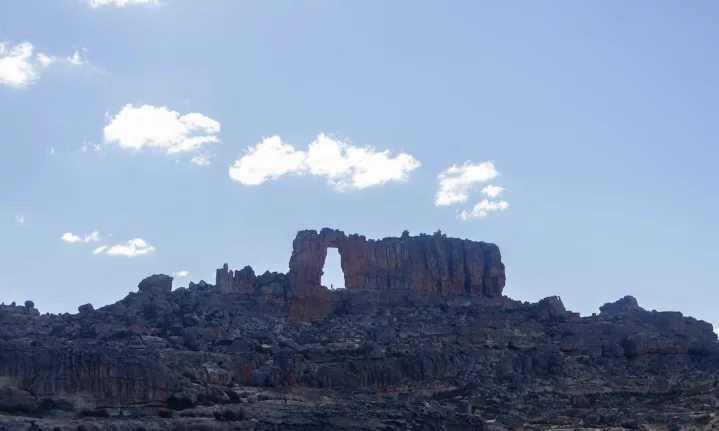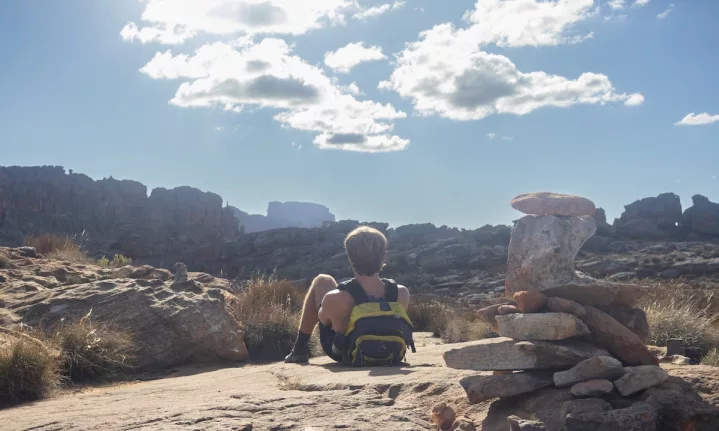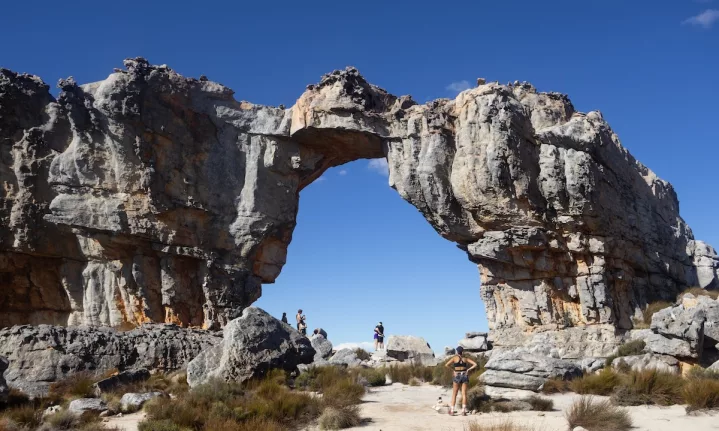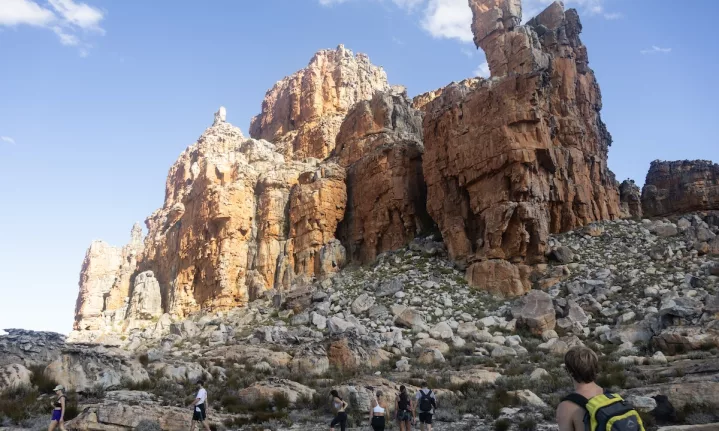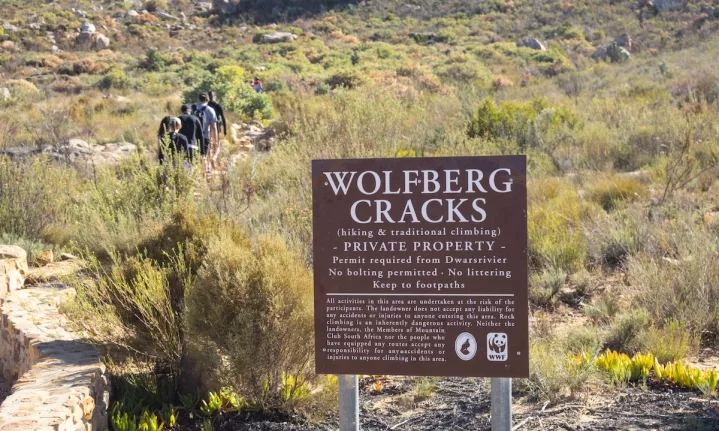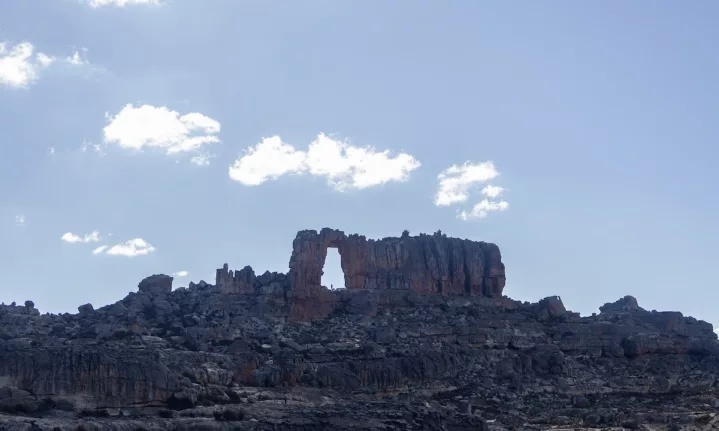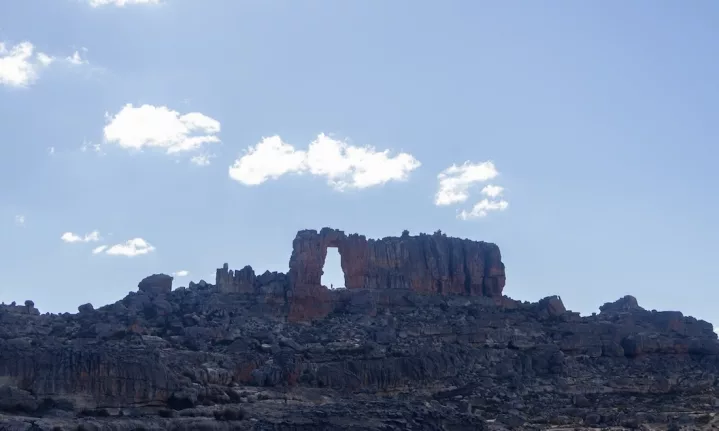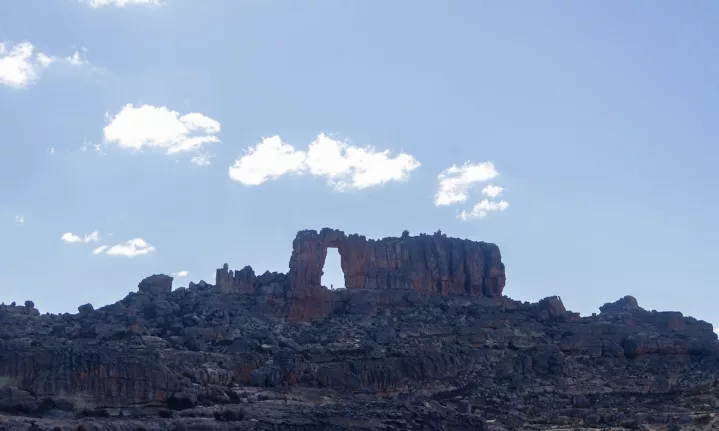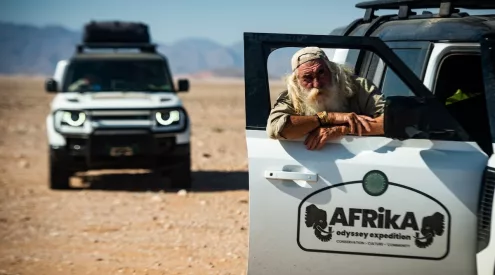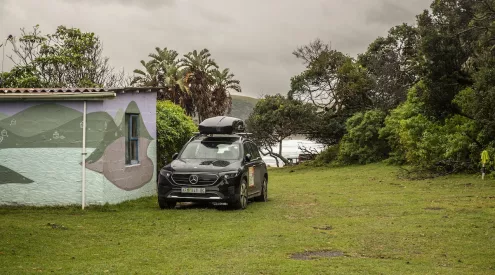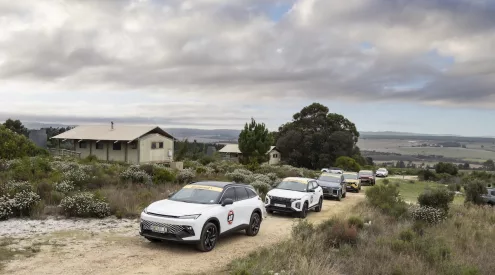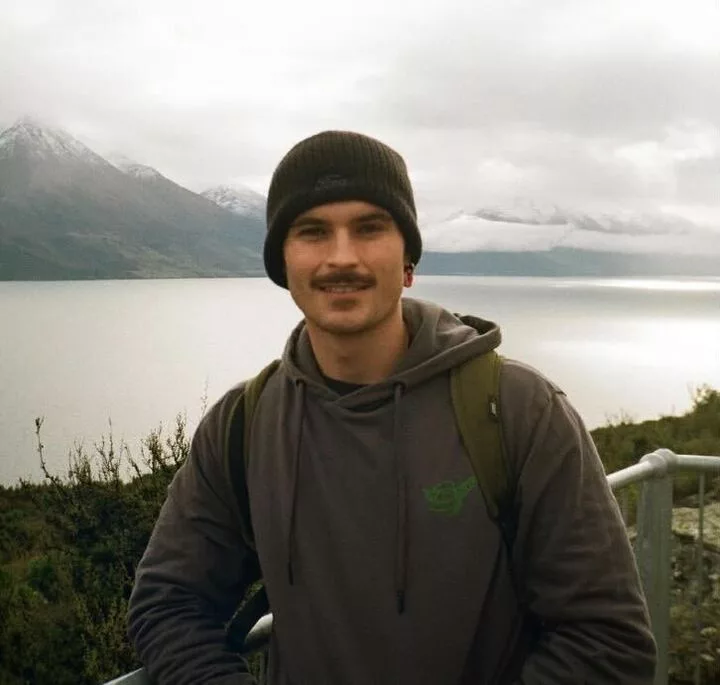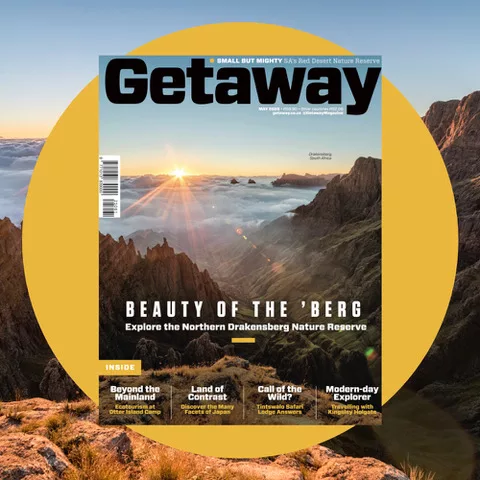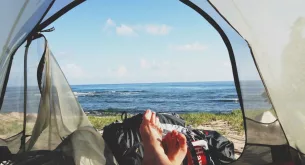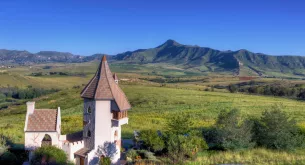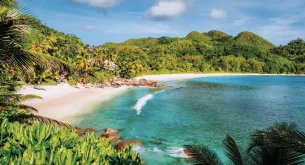The day before Easter Sunday, our campsite was faced with a very serious decision. Do we hike Wolfberg Arch and stay the night, or do we make it a day outing and get one more evening among the Bushwaka trailers and ten-man tents that had made Jamaka campsite into a little village for the weekend?
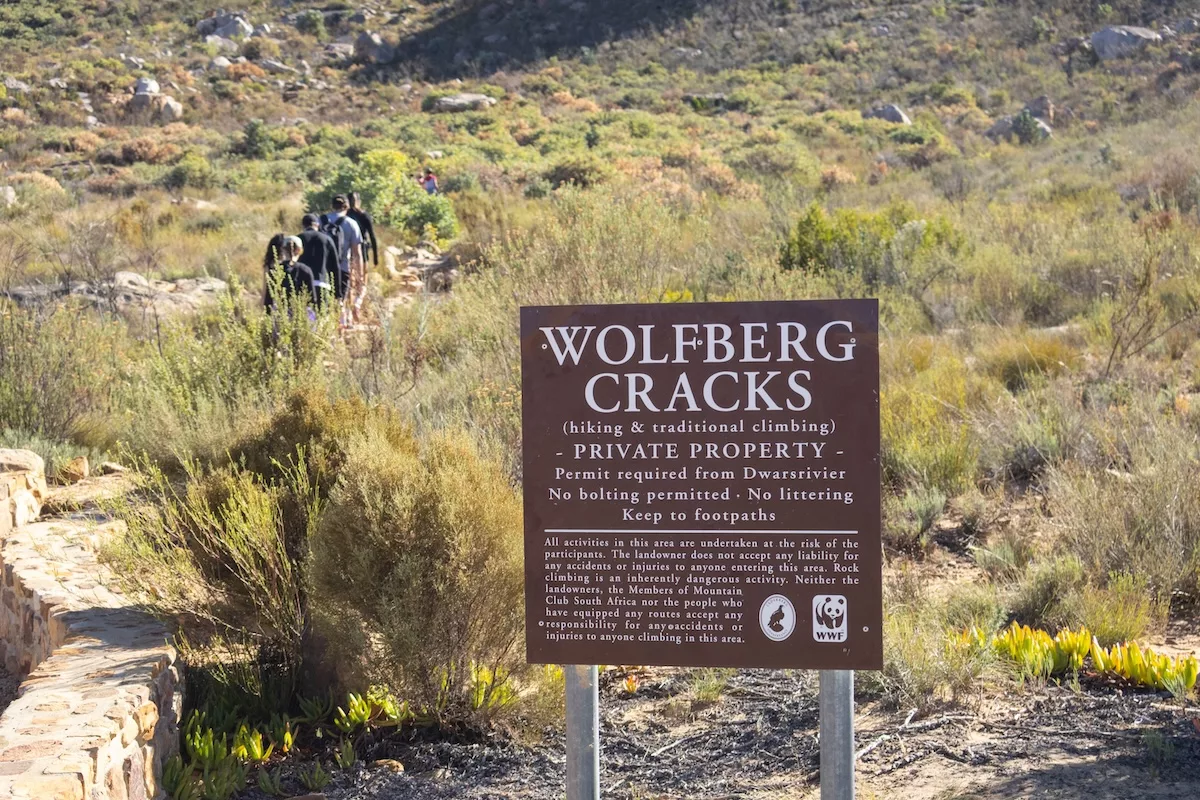
Image: Oliver Keohane
“I just don’t want to be hiking in the heat of the afternoon, so let’s try to leave early,” said my girlfriend. The Wolfberg Arch is magnificent at sunrise and sunset, and many of the permits are booked out for the overnight stay. As we picked our way down from the Arch, in the absolute heat of the afternoon, I wondered if part of the appeal of sleeping over is the promise of a cool evening and not having to make a three-hour descent on the same day.
Sandriff Holiday Resort, where one gets permits and access to the Wolfberg Cracks and Arch, is about a 45-minute drive, mainly over dirt roads, from Jamaka Organic Farm. Both are wonderful campsites, and every time I visit the Cederberg, I’m shocked at the number of quality camping locations to pick from. “It is a massive area,” my friend bluntly reminded me.
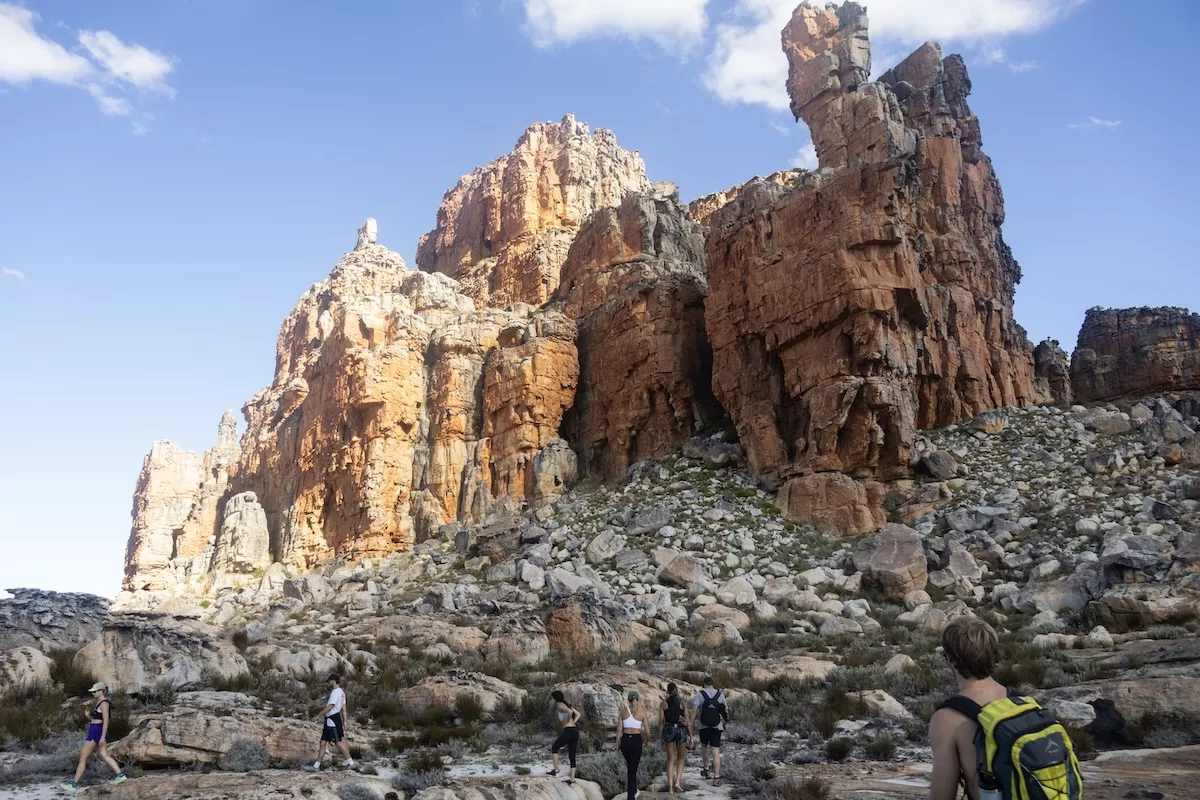
Sandstone Giants/ Image: Oliver Keohane
Taking into account roughly two hours of travel time (there and back) through the Cederberg’s massive, wonderful wilderness, three hours up to the Arch – a little bit of time taking in the glory – and then three hours back down, you’ve got a full working day at your feet. The beautiful problem with camping is that one hour feels like three, and it is easy to be lulled into believing you really do have all the time in the world.
Four couples and varying morning routines meant we made it out of the campsite at 8:30 on the morning of Easter Sunday, fuelled by triple-chocolate hot cross buns from Checkers, and returned in the dark, 16km and one magnificent summit later.
The hike starts inside Sandriff’s main gate, where you drive through a field of rock totems to get to the parking. The first kilometre on foot goes basically straight up. Every time I stopped to puff in the increasingly hot air, I was shocked by just how rapidly the car park was shrinking. After the steep climb, you reach the first few handles and ropes, and from there the hike gets more interesting.
All of a sudden, the shimmering vista of Cederberg farms and Cape Fold mountains disappears, and you find yourself in the heart of the most iconic Fold mountain.Thanks to hundreds of millions of years of tectonic pressure, freezing and thawing and wind and water, the fault lines of the mountain gave way, carving out the dramatic chasms that we were cutting through on Easter Sunday.
“This doesn’t feel like a hike; I feel like we’re just playing around in here,” commented my friend. Initially, you squeeze through mild cracks and pop out into caves, layered with rocks. It reminded me of that optical illusion, “the impossible staircase”. The shade was a relief, and spirits were high; we were just over an hour in, and the toughest climbing was done.
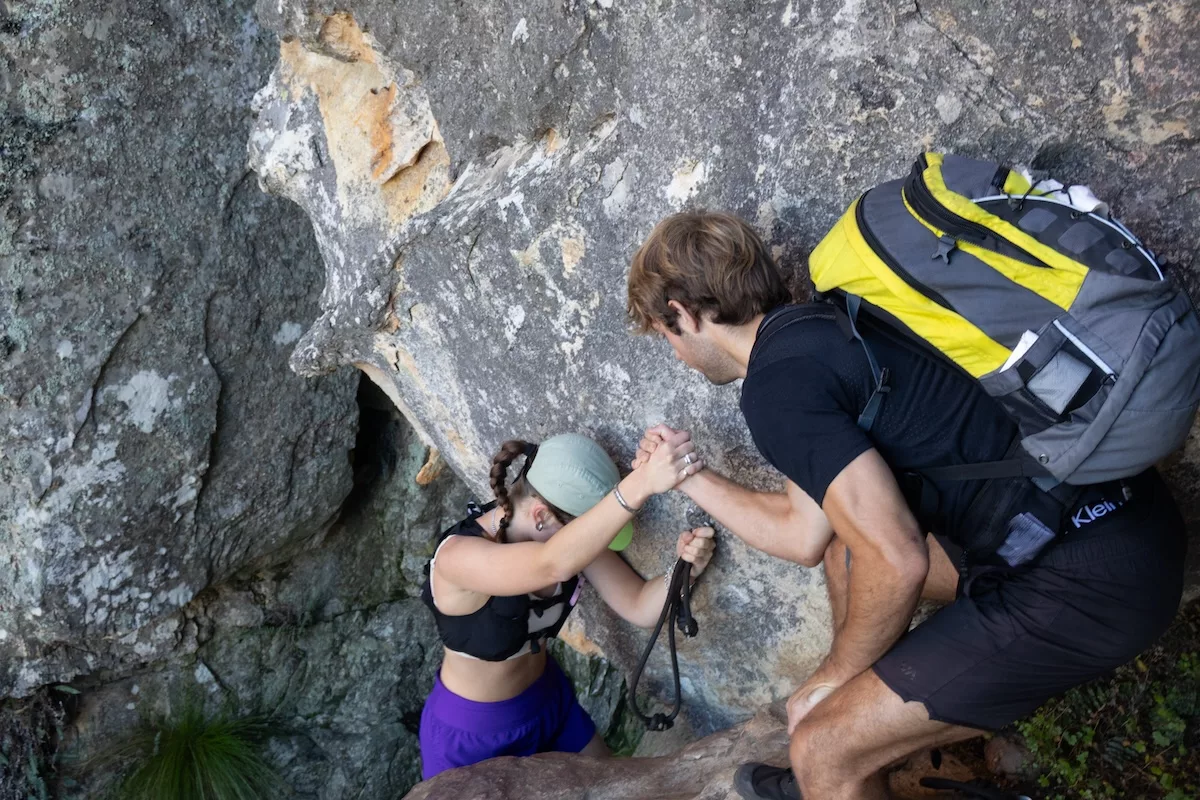
Things start getting interesting/ Image: Oliver Keohane
The next part of the route is a fascinating ascent through the cracks. Starfished in between two smooth walls of sedimentary rock, we slowly manoeuvred ourselves, one by one, up the middle of the mountain. Squeezing and contorting our limbs to the inner contours of the mountain, steadily working upwards until all of a sudden popping out onto a sunny plateau. Just like that, the farms and the Fold mountains were visible again. It’s a bizarre feeling to not go up the side of a mountain, or wind your way around it, but to actually cut right through it. Rubbing shoulders with these sandstone corridors, I felt like I was granted an intimate union with Earth’s ancient processes, a showcase of the compound interest of geological persistence.
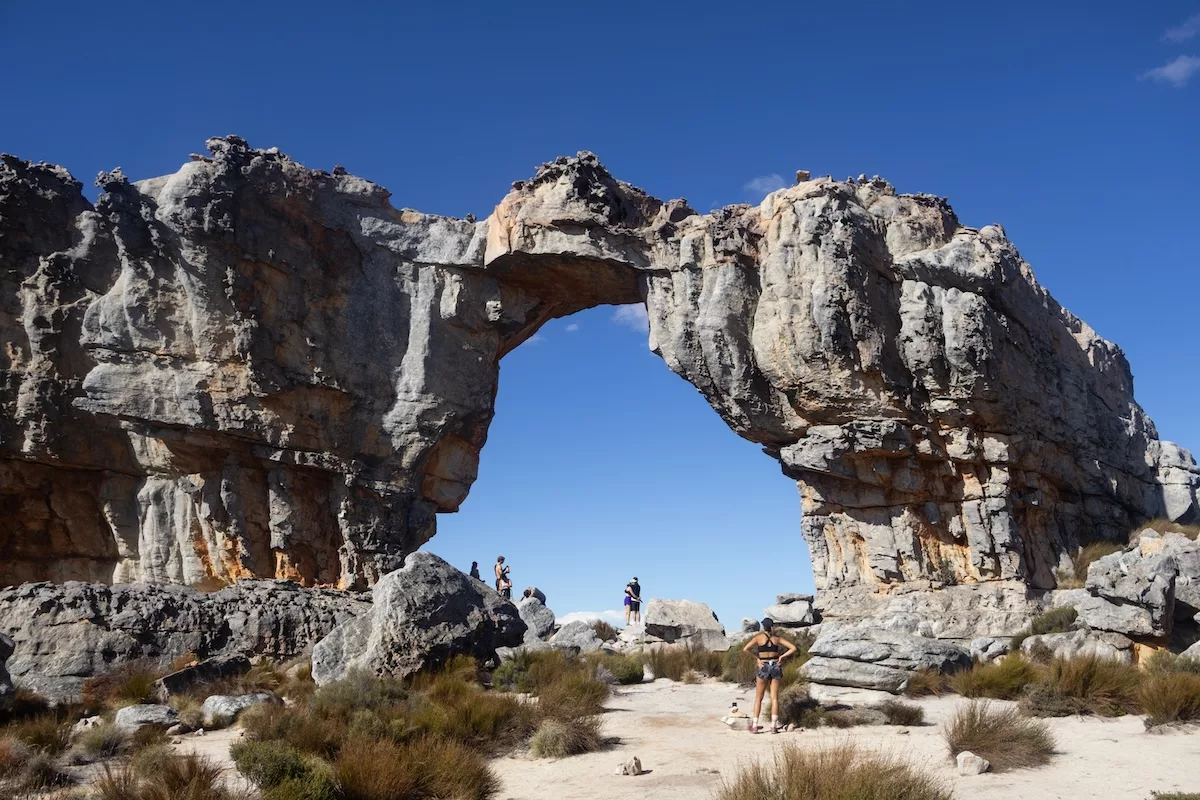
A spectacular summit/ Image: Oliver Keohane
After climbing the cracks, you have the option to take a different route back down or continue to the Arch. It’s an extra three kilometres to the huge sandstone portal, but the Arch comes into view early on. Admittedly, the early sighting was less impressive than expected. It’s only once you’re standing within 100m, with the silhouettes of fellow hikers dancing in the negative space, that the geological grandeur fully sets in. It really is a magnificent spectacle, an alien construction that doesn’t seem foreign on the extraterrestrial plains of the Cederberg mountain tops.
- We ate our packed lunches in the cradle of the Arch, chatting and laughing before deciding to try our hand at complete silence. To enjoy, for just a moment, the epic stillness high up in the land of fynbos and sandstone. We didn’t last very long, absolute silence is unusual, confrontational almost. But I’m glad we paused – even if just to pay respect to the phenomenon of erosion 800m above sea level.
-
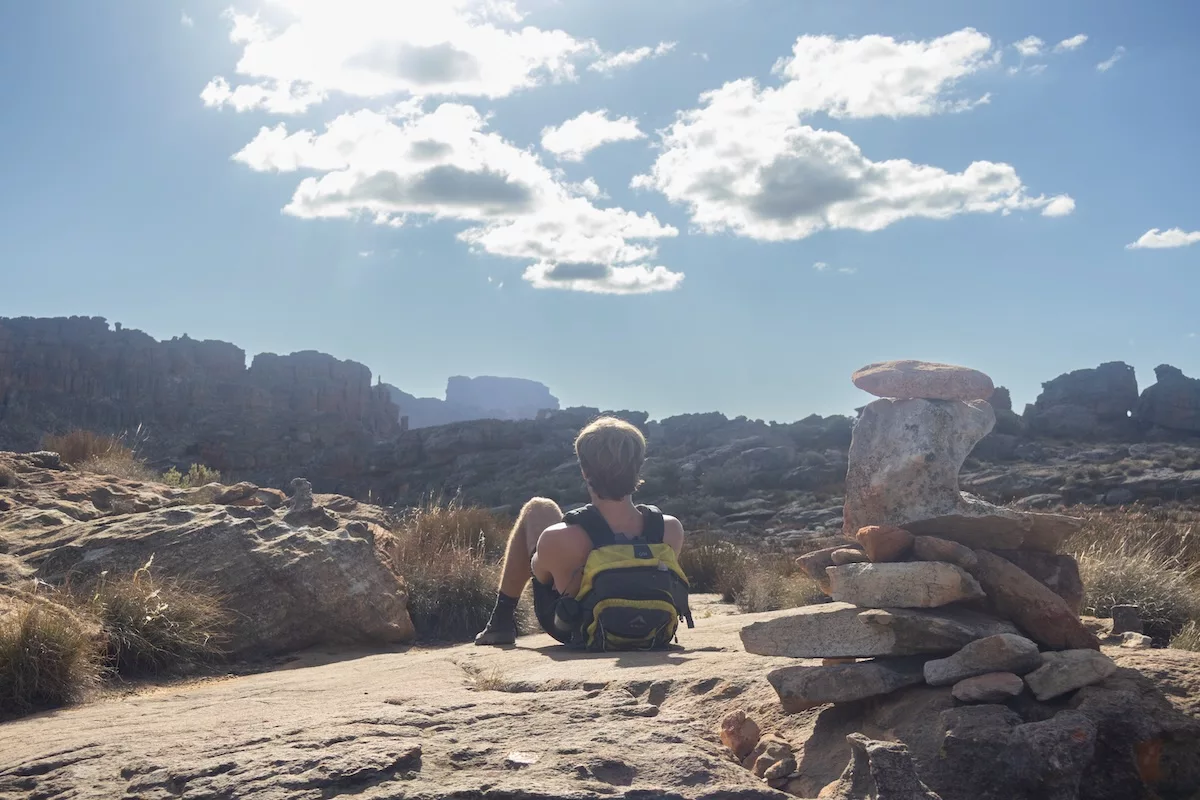
The long way home/ Image: Oliver Keohane
The three-hour journey back down allowed for a tired, quiet reflection on the day, and an opportunity to witness the distinctive copper sunset of the Cederberg from a lofty height. But we all would have enjoyed a quicker descent! While the route is popularised by the Arch, the cracks are a more sensible day hike and arguably the most engaging, impressive experience of the mountain’s natural architecture. As someone who had never made it to the Arch before, I’m glad we did both.
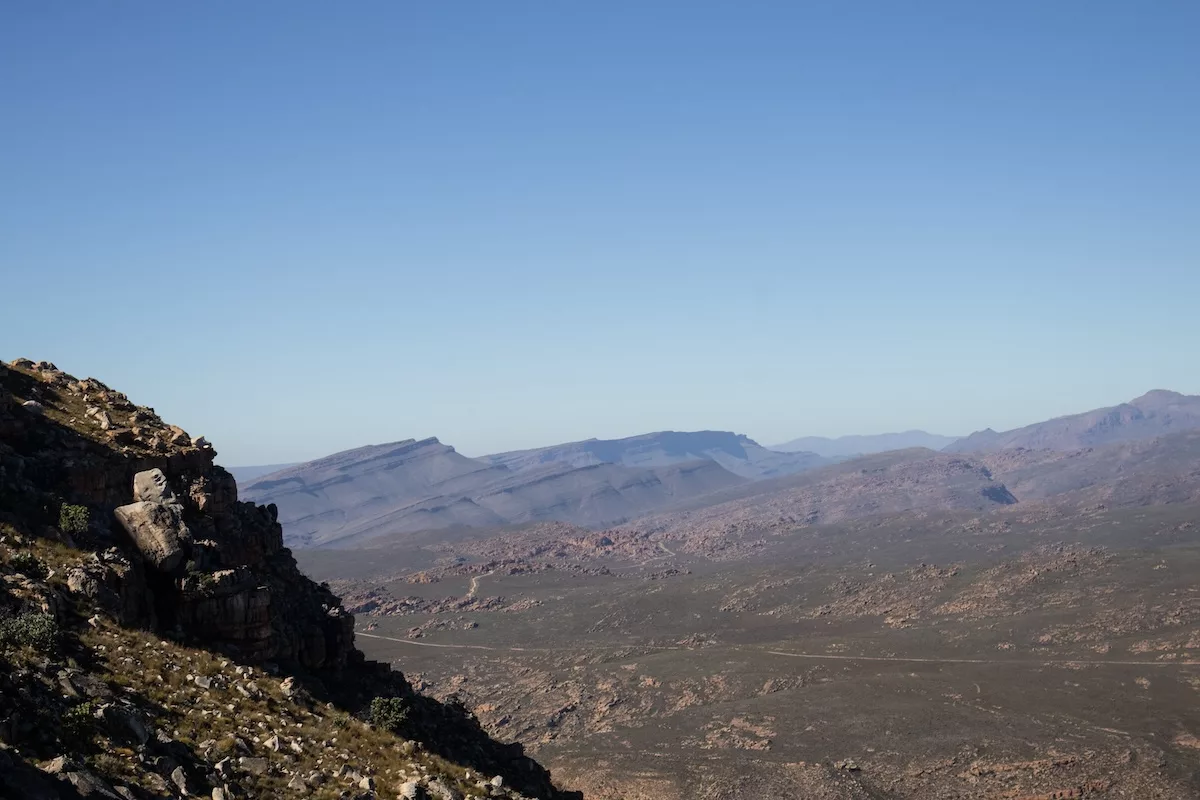
The Cape Fold mountains/ image: Oliver Keohane
Images: Oliver Keohane
Follow Oliver’s adventures on Instagram.
Follow us on social media for more travel news, inspiration, and guides. You can also tag us to be featured.
TikTok | Instagram | Facebook | Twitter
ALSO READ: The Pebble and the Power of Time, with Kingsley Holgate

